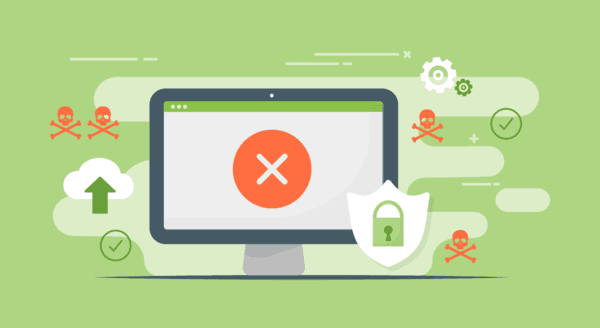
How to Prevent DDoS Attacks
November 14, 2018
Current Security Challenges Facing the Internet of Things
November 21, 2018It is no longer a secret that data breaches affect many organizations. Actually, breaches have become so common to the extent that they no longer make news headlines. These breaches not only cut across all industries but also affect small, medium, and large businesses alike. Those who run small businesses may think that a data breach isn’t something to worry about. If you are in a similar situation, you should take note of the fact that you collect a lot of sensitive data from your clients ranging from credit card information to mobile phone numbers. This data needs to be protected.

It is imperative that you establish processes and systems for handling any sensitive information that is in your possession. You should not just focus on clients’ data alone since your data is equally important. Of course, the establishment of systems for handling sensitive data is commonplace in the corporate world. Nonetheless, most small business owners tend to focus on managing the day to day operations to the extent of forgetting about the impacts of data security. From a data security perspective, this can be disastrous.
Before you embark on implementing processes for enhancing data security, you must first undertake a survey to map out data under your ownership and where it is. Thereafter, you can start sorting it out. Not all data that is within your possession is equal. Some datasets could be more sensitive than others and, therefore, require more protection. For this reason, you should categorize data as internal, confidential, public, and so on.
Data classification will enable you to establish which privacy protection measures ought to be put in place. Once you have categorized your data and set up protection measures, it will be easy to monitor the circulation of data through your business.
The formulation of appropriate data protection processes may involve some trial and error since it isn’t a one-off process. Keep in mind that if you take a laissez-faire approach when handling data, you are likely to experience some pushback from clients and partners. Involving them in all processes will ensure more cooperation. The following five tips will come in handy.
Step 1: Formulate a Responsibility Assignment Matrix
It is advisable that you incorporate a RACI matrix when undertaking key projects. If applicable, include a RACI matrix for the entire company. RACI (Responsible, Accountable, Consult, and Inform) defines who is responsible for what, who is accountable for what, who should be consulted prior to making final decisions, and who is to be kept in the loop. Using this matrix can help you clear up any confusion that might arise.
Step 2: Establish an Information Security Team
Regardless of the size of your organization, it is crucial that you establish a security committee. This team will oversee your data security program by managing risk assessment activities besides approving whatever baseline controls that you select. When you establish the information security team, it is good practice that you include reps from all departments in your company.
This way, everyone will be aware of the significance of data security. Besides this, employees will learn about identifying risks and the best approaches for handling them. Make the team aware of the implications of data breaches to your company, and their significant role in mitigating these breaches. This will put them in the best position to identify loopholes that typically lead to data breaches and practices that they should adopt to seal them.
Step 3: Assemble Tools That Work for You
Once you have an information security team in place, you need to equip them with requisite tools. Rather than trying to create an internal system from zero, you should utilize SaaS programs. This will go a long way in ensuring that your team stays on track.
You should test several of these to find out which of them works best for the team. When choosing tools that will help you mitigate data breaches, always ensure that members of your information security team are well-versed with how the tools operate. Any uncertainties ought to be addressed so that no one feels left out whenever team decisions are made.
Step 4: Document All Processes and Procedures
This might sound simple, but only a handful of companies actually document their policies, methodologies, and procedures. Without undertaking any documentation, your workflow is likely to grind to a halt with time. Planning is great, but nevertheless, the execution of whatever plans you put in place should always start with proper documentation.
It is almost impossible to convey security information to your company’s stakeholders or even train new employees if you do not have proper documentation pertaining to your data security strategies. Once you have formulated a plan, go ahead and incorporate it with collaborative tools so that all your processes can be easily accessed, shared, and updated.
Step 5: Establish an Incident or Crisis Response Plan

Since corporate security breaches are becoming even more common, you need to adequately prepare for them. Having a process in place will guide you on what to do when faced with a crisis. In addition, an incidence response plan helps you understand your regulatory and contractual requirements as far as reporting data breaches is concerned. This may include highlighting the service agreements that you have with clients in case a breach touches on their data.
The best defense mechanism against data breaches is preparation. After every data breach incident, you should always seek to uncover the root cause. This can help you pinpoint vulnerabilities within your system, which could be the conduit for attacks. Depending on your company’s size, gather all teams from HR to IT so that you establish departmental weaknesses that could be leading to the breaches. Data breaches typically point to bigger problems. In addition, you shouldn’t just focus on putting off fires when faced with a breach.
Responding to a breach should also involve putting in place measures for preventing reoccurrence. For this reason, you should understand and classify data within your possession since this will help you set up appropriate workflows. Once every stakeholder is reading from the same script, you will not only be able to protect your clients’ data but also your own.
Once a breach hits you, undertake a situational analysis so that you establish its impact on your operations. Besides this, try to access the data that has been affected by the breach. This will ultimately help you contextualize the consequences of the attack, and see how individual stakeholders were affected. If employees were involved in the breach, consider undertaking staff awareness since it will put them in a better position to pinpoint and mitigate risks in the future.
It is advisable that you disclose the breach to stakeholders rather than hiding it from them. The financial implications of non-disclosure outweigh those of disclosure. Soon after you establish that a breach has occurred, communicate the same to your employees, and thereafter, your customers. You should also highlight measures that you have taken to handle the situation, and what you plan to do to avoid future occurrences.

